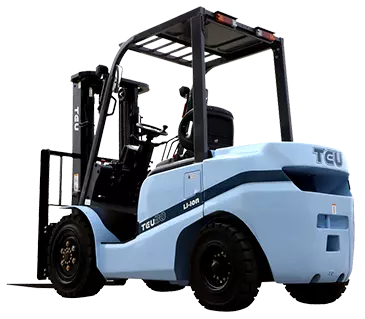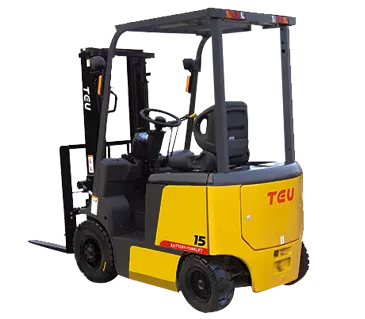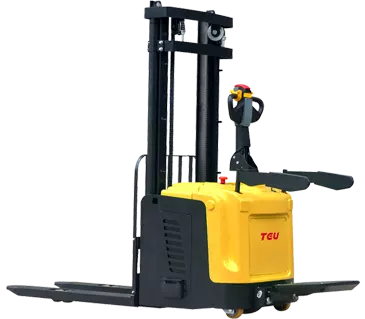What Is a Forklift?
A forklift, also known as a Forklift Truck, is a type of wheeled material handling vehicle designed for lifting, stacking (vertically), and short-distance transporting palletized goods. Forklifts are essential equipment used in various industries such as manufacturing, warehousing, logistics, ports, and docks.
Why Is a Forklift Also Called a Truck?
The term “Forklift” refers to its primary function: using the forks at the front to lift materials.
The term “Truck” emphasizes its nature as a vehicle or transportation device used for moving and carrying heavy loads. In industrial settings, “Truck” is commonly used to describe vehicles that help with material transport, such as Pallet Trucks or Stacker Trucks.
Thus, Forklift Truck combines both functions: lifting with forks and transporting materials as a vehicle. The International Organization for Standardization (ISO/TC110) refers to it as an Industrial Vehicle.
Types of Forklifts and Their Ideal Applications
Forklifts can also be classified according to their power source and structural function. Based on their power source, they can be categorized into electric forklifts and internal combustion forklifts. Based on their structural function, they can be divided into counterbalance forklifts, reach trucks, stacker cranes, pallet trucks, and narrow aisle forklifts.
Here’s a breakdown:
By Power Type
|
Type |
Fuel/Power |
Advantages |
Disadvantages |
Ideal Usage Scenarios |
|
Electric Forklift |
Battery/Electric Power |
Environmentally friendly, low noise, easy maintenance |
Limited runtime, requires smooth surfaces |
Indoor warehouses, food, pharmaceutical sectors, and other environments requiring low emissions |
|
Internal Combustion Forklift |
Diesel/Gasoline/LPG |
Powerful, long working hours, suitable for uneven ground |
High emissions, noisy, fuel costs |
Outdoors, docks, construction sites, and high-intensity environments |
By Structural Function
|
Type |
Features |
Ideal Usage Scenarios |
|
Counterbalance Forklift |
Most common, with counterweight at the rear to balance the load |
Indoor and outdoor use, unloading trucks, stacking, long-distance transport |
|
Reach Truck |
Mast can extend forward, compact design for narrow aisles |
High shelving, high-density storage in narrow warehouse aisles |
|
Stacker |
Walk-behind or stand-on operation, primarily for vertical stacking |
Short-distance material handling and medium to low-level stacking |
|
Pallet Truck |
Also called “Hand Pallet Jack”, used for horizontal transportation of pallets |
Short-distance, low-efficiency material handling in warehouses and workshops |
|
VNA Forklift |
Operates in extremely narrow aisles, with rotating or side-shifting forks |
Highly automated, space-efficient warehouses |
How Are Large, Medium, and Small Forklifts Classified?
Forklifts are classified according to their rated lifting capacity (load capacity) and specific operating environment requirements. In most cases, they are distinguished by load capacity. Generally, small forklifts are 1.0 – 2.5 tons, medium forklifts are 3.0 – 8.0 tons, and large forklifts are 10.0 tons and above.
|
Classification |
Rated Lifting Capacity (Ton) |
Typical Application Scenarios |
|
Small Forklifts |
1.0 – 2.5 tons |
Retail warehouses, small factories, indoor light material handling |
|
Medium Forklifts |
3.0 – 8.0 tons |
Standard warehouses, logistics centers, medium-sized factories, container unloading |
|
Large Forklifts |
10.0 tons and above |
Ports, docks, steel mills, heavy machinery manufacturing, and handling oversized or heavy materials |
How to Choose the Right Forklift for Your Operation?
Selecting the right forklift depends on several factors related to your operational environment, material characteristics, and budget.
Here are some key factors to consider:
|
Consideration |
Key Questions |
|
Load Capacity |
What is the maximum lifting weight? |
|
Lifting Height |
What is the maximum stacking height you need? |
|
Work Environment |
Indoor or outdoor? Indoor requires electric forklifts; outdoor or uneven surfaces require internal combustion forklifts or rough-terrain models. |
|
Aisle Width |
How narrow are the aisles? |
|
Operating Time |
How long will the forklift be used each day? |
|
Environmental Concerns |
Are there low emission or noise restrictions? |
|
Tire Type |
Smooth surfaces need solid/foam-filled tires; |
What to Look for When Buying a Forklift Online?
When buying a forklift online (especially second-hand or imported models), it’s important to be cautious and check the following factors:
- Verify Credentials and Reputation: Choose authorized dealers or platforms with good reviews.
- Check Technical Specifications: Ensure the rated capacity, maximum lift height, weight, and dimensions meet your needs. Request technical sheets and user manuals.
- After-Sales Service & Warranty: Clarify warranty periods and coverage (especially for batteries and main components). Confirm the availability of spare parts and maintenance support.
- Regulations & Certifications: Make sure the forklift complies with local safety and emission standards. Request certification documents and invoices.
- Shipping & Delivery: Confirm delivery times, transportation costs, and insurance. Understand the process for inspecting the forklift upon arrival.
Choosing the right forklift ensures efficiency and safety in your operations. By carefully considering your needs and the technical details, you can make an informed decision.





